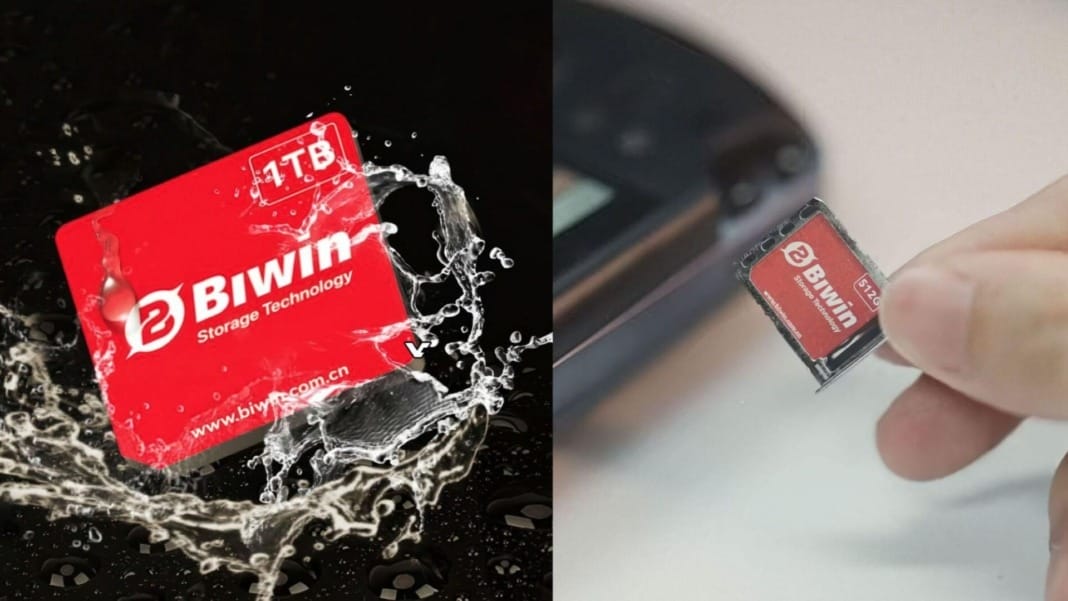Chinese storage manufacturer Biwin has introduced the Mini SSD, a new storage format that could replace the widely used microSD card. The device is remarkably small, measuring only 15mm by 17mm with a thickness of 1.4mm, making it even smaller than a US penny. Despite its size, it can store up to 2TB of data, a capacity far greater than most microSD cards currently available.
The Mini SSD delivers sequential read speeds of 3,700MB/s and write speeds of 3,400MB/s through a PCIe 4×2 connection. This level of performance places it much closer to full-size SD Express cards than to traditional microSD speeds. The design is aimed at devices where size and performance are critical, such as laptops, tablets, smartphones, and digital cameras.
Biwin has also built durability into the device. The Mini SSD comes with IP68 water and dust resistance, and it can withstand drops of up to three metres. Its slot system works similarly to a SIM tray, allowing users to eject and swap drives with a pin easily. This feature may appeal to people using portable devices that require frequent upgrades or replacements.
The importance of industry standards
Although the Mini SSD offers impressive specifications, its future will depend on whether Biwin decides to pursue universal standards. History shows that industry backing is essential for new formats to succeed. When SanDisk introduced microSD in 2005, originally called T-Flash, it immediately submitted the format to the Secure Digital Association (SDA), the organisation responsible for SD card standards.
That decision allowed “a ton of companies” to begin manufacturing compatible products, which led to microSD becoming almost universally adopted across industries. Without such support, Biwin’s Mini SSD risks being confined to a limited number of devices rather than becoming a widely accepted storage solution.
For the Mini SSD to truly rival microSD, Biwin would need to submit the format to either the SDA or PCI-SIG, the leading organisations that oversee removable storage standards. If adopted, the Mini SSD could then be considered by other hardware makers for broader integration into their products.
Early adoption and prospects
The Mini SSD already has an edge over existing technologies. MicroSD Express cards currently reach maximum speeds of around 985MB/s, while SD Express cards peak at about 3,940MB/s. At less than half the size of SD Express, the Mini SSD matches those speeds, offering a compelling combination of performance and portability.
It may not rival the fastest storage solutions overall, as M.2 drives still lead the market with speeds of up to 14,000MB/s. However, the Mini SSD’s compact design and strong durability make it an attractive option for mobile hardware, where saving space and ensuring resilience are often more important than peak transfer rates.
Some manufacturers have already begun adopting the new format. Two Chinese gaming handhelds, the GPD Win 5 and the OneNetbook OneXPlayer Super X hybrid, now include dedicated Mini SSD slots. This early adoption suggests that the format has a chance to grow, provided Biwin takes the crucial step of securing industry-standard approval.
If the company pursues that path, the Mini SSD could mark the beginning of a new era in portable storage, potentially reshaping how consumers and manufacturers think about expandable memory.





